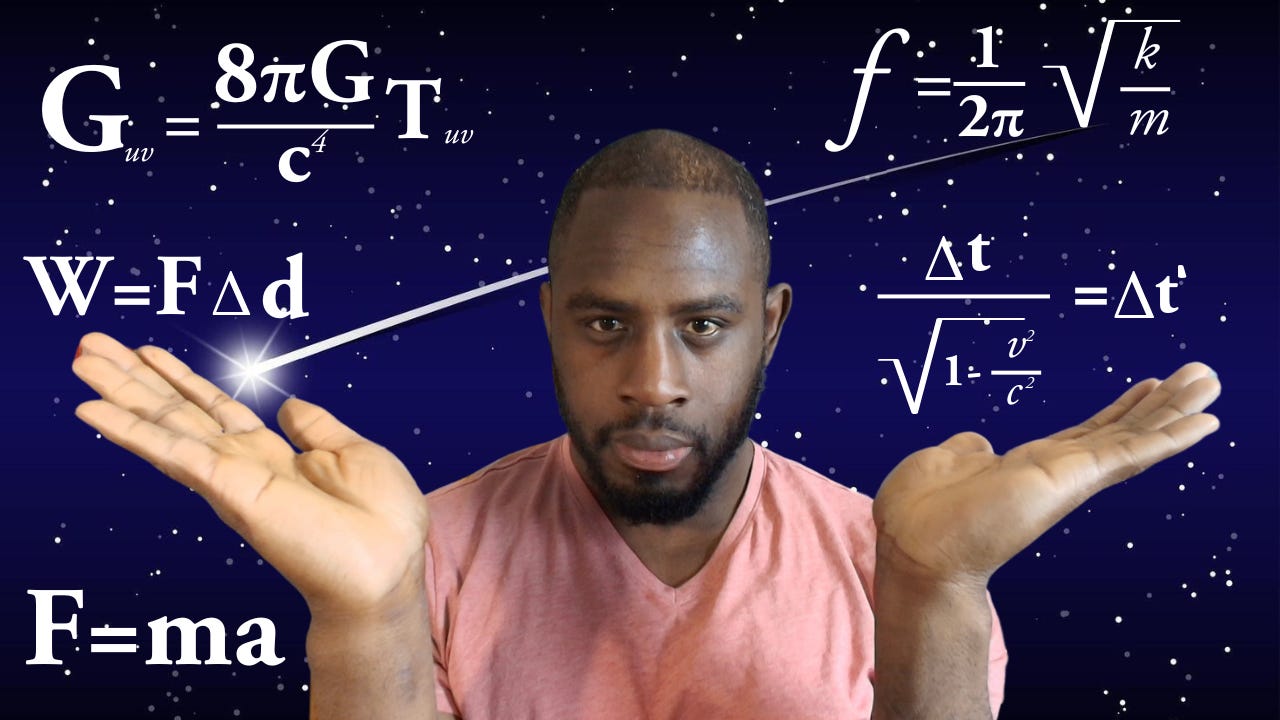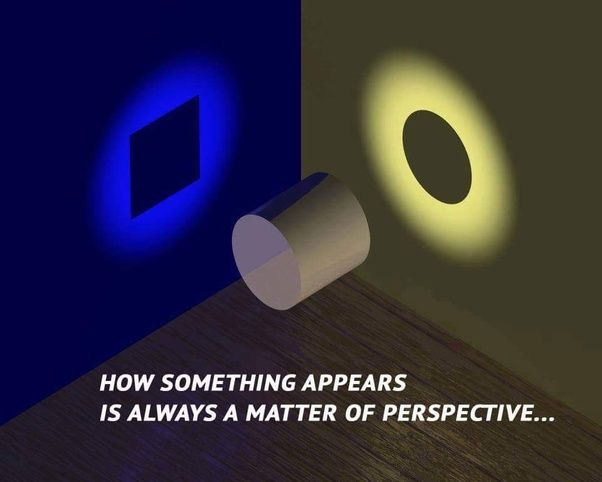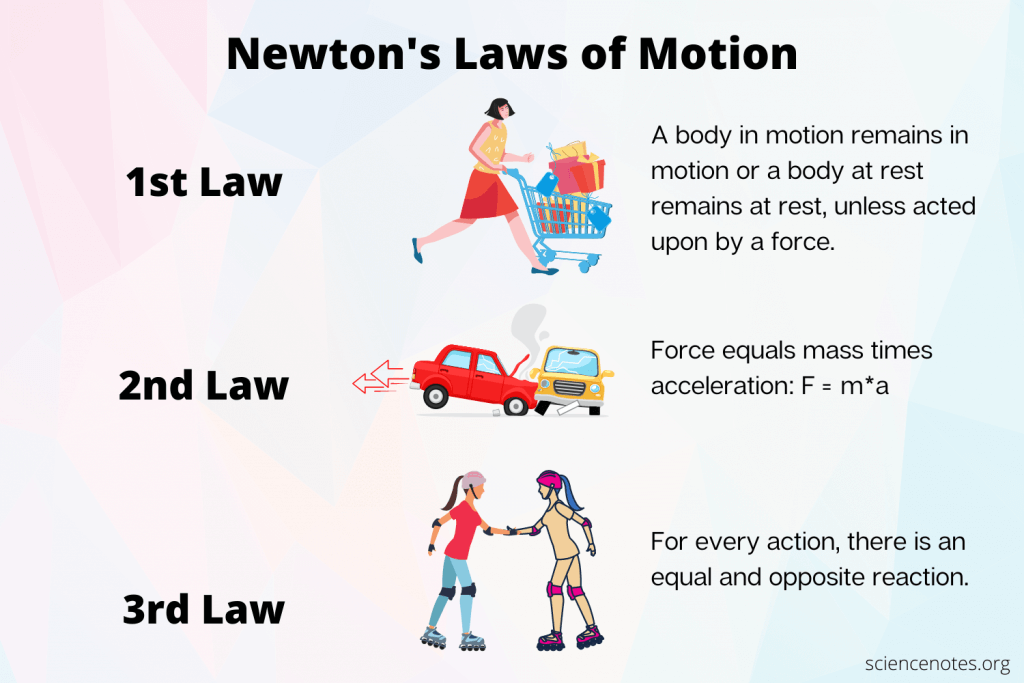13 beautifully simple physics ideas to help you understand human behavior
|
It’s astounding how much human behavior is entirely explainable, predictable, and exploitable. Oddly enough, I realized this while studying something devoid of emotions: physics. The best thing about earning my degree in physics is that it’s given me a framework to understand the world—and I don’t mean just the motions of the stars or the way time and space play together. The most surprising thing about studying a subject with so much math—a cold, impersonal, but highly useful discipline—that everyone who completes it automatically earns a minor in mathematics, is how it helped me understand the other people on this planet. Physics gave me a new way to see the world, grasp subtle nuances about life, and get more out of my short time on this planet. Connecting the external world and my internal state of mind improved my mental health, well-being, and satisfaction with life. Earning that degree was probably the second most difficult thing I’ve done in my life, only behind having a newborn while writing my upcoming book “Hard Lessoons From The Hurt Business: Boxing and the Art of Life” (pre-order here) and only slightly ahead of an eight-week training camp for a fight. Like all difficult things, I came away not only with new skills to tackle new problems but also with a new perspective to help me understand old problems, like other people's behavior. Before we jump into those perspectives, because there are bound to be questions about this because every time people find out I studied physics, they ask some variation of the question, I want to tell you the very condensed story of how and why I came to study physics in the first place. If you dig this so far, share it. You won’t regret it. Share When I was 29, I went back to school to major in math. I wanted to study some type of engineering because I saw that those guys made good money and were highly satisfied with their jobs. However, I was in the middle of my boxing career and figured that I’d have to miss quite a bit of class. Since you can’t become an engineer without lab science—and you can’t take lab science classes online—I opted for math, figuring I’d have a foundation for all types of interesting, high-paying, quantitative work. I enlisted in the Army National Guard to get money for school and to be able to continue my boxing career in between the one weekend a month, 2 weeks a year commitment. While going through AIT—the basic training after basic training for all my vieweres who have not served (and those who have know exactly what AIT is), I fell in love with electrical engineering while going through a 6 weeks basic maintenance in the Army’s Ordanance School at Fort Lee (now for Fort Gregg-Adams because everything is offensive to everyone) and electronics course before I started the real training for my military occupational specialty–94A, or “Land Combat Electrical Systems Repairer.” At that point, I said I’d figure out the lab class thing. It was never even an issue, but one of those lab classes I was afraid of missing was physics. For an experiment with projectile motion, we had to predict where a marble would land based on the ramp's angle and the marble’s mass. Despite the effects of imperfect measurement and error inherent with all science experiments, my marble landed precisely where I marked the tape multiple times. I said, “Yo! This shit is like magic. THIS is what I want to study!” To make a 3-year story of sleep deprivation and wondering if I’d ever actually understand quantum mechanics or tensors, I graduated from Duquesne University with a very expressive piece of paper, a surprisingly small amount of debt, and a few years shaved off my life from juggling the training load of a professional fighter and full-time physics student—and my GPA wasn’t horrible either. It wasn’t great, but it did start with the number “3.” I wasn’t bad at math, but it was not my strong point. Most of my classmates had savant-level talents with math. My strength was visualizing ideas and making sense of the counterintuitive. I could do this because I connected many ideas to something I knew well—people. The rest of this essay is a list of some of the most fascinating connections I made between the workings of the universe and the behavior of the people who reside in it. Hopefully, you can use these connections to better predict when a relationship with your fellow humans has the potential to go sour and recognize when you’ve got a great setup in your life. But first, I have to give a shout-out to Shortform for sponsoring this essay. I left out an important part of my journey to getting a physics degree: I spent an entire year learning math from scratch because I was a terrible student in high school, from which I didn’t graduate, and I had no confidence in my academic abilities. If there had been something like Shortform around when I was younger, I think school would have been much easier, and it wouldn’t have taken me so long to finish college.
Shortform is a book summary platform where you can get detailed summaries of over 1,000 popular nonfiction books. They have summaries on books ranging from philosophy to history to psychology and some of the latest New York Times bestsellers. While compiling this video essay, I checked out some of Barbara Oakley's work, including “A Mind for Numbers.” It’s a favorite of mine because she outlines how we think about math and how we can all get better at it. I also discovered that she’d written other books about learning, and if you’ve been watching my videos, you know how much I love learning. Along with book summaries, Shortform offers well-researched original articles that explain popular trends and current events, complete with references and citations to support their arguments. While Shortform may market itself as a book summary platform, it is also a great place to learn faster and understand the social and political trends of the day. To check out Shortform, use my link shortform.com/latimore for a one-week free trial, and if you stay on with them after your trial ends, you get a 20% discount on your subscription, but only after if you use that link. The link is both the pinned comment and the description. Once again, thank you to Shortform for sponsoring the essay. Now, let's go back to some metaphors and insights from physics that will help you understand human behavior.
Relativity: The Science of PerspectiveAlbert Einstein’s Theory of Special and General Relativity lead us to a few interesting conclusions about the universe. The most relevant two to this discussion are:
These two powerful concepts can increase your happiness on this planet. Your social connections tremendously impact the quality of your life. You need to spend time with close friends and loved ones. And if you don’t have any friends, make some. I dropped a video on how to do that in the description. You are happiest when surrounded by other humans because humans are social creatures. Furthermore, know that you can never truly be alone. The universe itself demonstrates this principle. Even light—the fastest thing in existence—follows the curves other objects create. Nothing travels its path without being influenced by what surrounds it. In our darkest hour, it's easy to believe that no one understands our plight. This is untrue. Someone's had it worse. Someone understands. Someone's made it through and can teach you how to do the same. Either for instruction or love, you're never lacking in the universe. You are never alone. The Relativity of PerspectiveObservers moving at different speeds or in different gravitational fields experience time differently. A clock on a spaceship moving near light speed ticks slower than one on Earth. Both measurements are correct from their respective reference frames. Now, for this time dilation effect to occur in the real world, you’d have to be going pretty fast—at least 10% of the speed of light, if I recall. Like the rest of this essay, the ideas shouldn’t be taken literally. Even a crackhead can’t run that fast. The point is that two people can have different subjective feelings about objective facts because of their different backgrounds, experiences, and knowledge, especially if they’re moving through life at dramatically different paces. The biggest waste of time is arguing with people to change their feelings about something because it's perfectly reasonable for intelligent people to look at the same facts and have two different emotional reactions. And because we’re emotional creatures who, for better or worse, make most our decisions—even the important ones—based on how we feel, you’re in for a rough time on this rock if you don’t figure out how to live with people who think and feel differently than you about something, even if it’s so obvious to you what is the “correct” way to feel. Just as the laws of physics confirm that two observers can witness the same event differently and both be correct, we gotta accept that different perspectives in life are equally valid. Or, at the very least, every person is entitled to their perspective, and rarely does anything good or productive come from attacking or diminishing it. Each moment spent in denial of this is a moment of unnecessary misery you inflict on yourself. You have less time on this planet than you think. Please don't waste it arguing over things you can’t do anything about
. Wasted energy, zero work, and pushing back strongerAnother basic principle in physics tells us what happens when we expend energy trying to change a heart firmly entrenched in its feelings. The formula for work is force x distance. It doesn’t matter how much force you apply to something. Anything multiplied by zero is zero, so no work has been accomplished if it doesn’t change position. The only thing that happened—both physically and psychologically—is that you exerted a lot of energy, and the thing you're pushing against pushed back stronger. Newton’s 3rd law of motion, which states that for every action, there’s an equal and opposite reaction, is a good model to describe what happens when you push against something, but in the case of people, it goes even further, seemingly defying physics. Trying to convince someone they’re wrong about something usually doesn’t cause them to change their position. What tends to happen is a type of negative work, where the more you push them towards your way of thinking, the more it reinforces their original belief. This behavior isn’t conducive to working or getting along with other humans, let alone forming relationships with them. The Mathematics of RelationshipsWhen it comes to forming relationships—romantic, platonic, business, or otherwise—let's borrow a lesson from mathematics: When two things are equal, they're interchangeable. As a result, you don't need both of them. However, when two things are complementary, they are different, but both are needed for completeness. Like charges repel, and opposites attract. This fundamental principle from physics elegantly applies to human relationships. Just as electrons and protons form stable atoms through opposing charges, relationships often thrive on complementary differences rather than similarities. The more similar you are to someone, the less necessary one of you becomes in a functional sense. This isn't to say that shared values aren't important—they absolutely are. But when two people bring identical strengths, perspectives, and capabilities to a relationship, they may find themselves occupying the same space, creating friction rather than harmony—and that’s assuming they can coexist at all, as another fundamental rule of Newtonian or classical physics says that no two objects can occupy the same space at the same time. I hope any hardcore physics folks reading this appreciate me making the distinction of Newtonian physics. For everyone else, this happens in quantum mechanics. In non-quantum, real-world relationships, two extremely similar people may also create an atmosphere of subtle competition that undermines the relationship. Two highly analytical people might constantly try to one-up each other's reasoning. Two creative types might compete for recognition rather than collaborate. Two dominant personalities might struggle for leadership rather than finding a balanced dynamic. It's not so much that opposites attract in the conventional sense. It's more that complementary traits don't impede and infringe upon one another. They create space for each person to shine in their own domain while appreciating what the other brings to the table. Our strengths and weaknesses take on meaning through our interactions with others. A person who balances your tendencies—someone who brings calm to your storm or energy to your steadiness—creates a relationship with a broader range of capabilities than either of you possesses alone. Think of it as creating a more complete system. An introvert and an extrovert might balance each other beautifully—one handling deep one-on-one connections while the other builds a broader social network. A dreamer paired with a pragmatist can turn visions into reality. A risk-taker with a more cautious partner might achieve bold goals without unnecessary dangers. This complementary approach doesn't mean seeking your polar opposite in every way. Instead, it suggests finding someone whose differences enhance your strengths and compensate for your blindspots. The key is recognizing which differences create positive tension that propels growth and which create destructive friction. The strength of resonant relationships
Complementary personalities create powerful relationships, but there's an even deeper principle at work when we connect with others. When you link up with a person on the same frequency, you can accomplish more than the sum of your parts. Resonant frequencies happen when two waves match up perfectly and make each other stronger, like when you push someone on a swing at just the right moment to make them go higher. This amplification effect occurs in physics—and it's equally true in human connections. When two people are aligned in purpose and timing, their combined impact can be exponentially greater than they could achieve alone. The whole of the parts becomes greater than their sum. Rather than 1+1=2, the relationship behaves more like 1+1=7. The mathematician in you might object, but your heart understands this profound truth about human synergy. However, there is a corollary to this that you must watch out for. When two waves have opposite frequencies, their interference cancels out their individual properties. Analogously, a bad relationship brings out the worst in both individuals to the point that they are both useless. This wave theory of relationships explains why timing and alignment matter so much. Two brilliant, kind, and talented people might destructively interfere with each other if their fundamental frequencies—their values, goals, or communication styles—are consistently out of phase. Meanwhile, two seemingly ordinary individuals might create extraordinary outcomes when they resonate perfectly. The science of wave interference teaches us to be selective about our connections. Not everyone who complements your strengths will also resonate with your frequency. The strongest relationships have both complementary attributes and resonant timing—different enough to expand your capabilities, aligned enough to amplify your impact. Pay attention to those relationships where your combined efforts seem almost magically effective. These are your resonant connections, the people with whom your wave patterns synchronize to create something greater than either of you could manifest alone. And be equally mindful of connections that seem to drain both parties of their natural power—these are the destructive interferences that physics warns us about. Newton’s three laws of negative societal dynamics
Everyone who’s ever taken physics, even if they didn’t major in it, has likely learned about Newton’s three laws of motion:
What’s cool about these laws is that with just these three laws, everything outside of relativity and the quantum realm can be calculated with precision, which means you can predict how something will move. Well, there are analogs to Newton’s 3 laws in human behavior and, like Newton’s laws, once you know them, you can predict how people will behave. 1st Law: Inertia in Human Action
This principle explains why habits are so powerful yet so difficult to change. Just as objects at rest tend to stay at rest, we resist changing our routines until sufficient force—whether through motivation, necessity, or crisis—compels us to action. Our behavioral inertia keeps us in comfortable patterns unless disrupted by a stronger force. Consider how many of us continue scrolling through social media despite intending to do something productive or how organizations maintain outdated processes simply because "that's how we've always done it." The path of least resistance becomes our default trajectory. 2nd Law: The Force of Social Influence
Just as force accelerates an object proportionally to the mass involved, the impact of social influence increases with the perceived importance of its source. We see this in how celebrity endorsements move markets, how respected leaders inspire action, and how trusted sources shape our beliefs. This explains why we're more likely to follow health advice from doctors than from random strangers and why companies pay influencers to promote their products. The greater the source's perceived authority or relevance, the stronger its ability to change our behavior. 3rd Law: Social Action and Reaction
This describes the cyclical nature of social change. For every push in one ideological direction, expect an eventual push back. We see this pattern throughout history: periods of conservatism followed by progressivism, individualism countered by collectivism, and traditionalism answered by modernism. This law reminds us that social change rarely moves in a straight line. Instead, it oscillates between extremes before potentially finding balance. Understanding this can help us anticipate resistance to new ideas and recognize when our own reactions might be part of a larger pendulum swing rather than a measured response. By recognizing these relationships and patterns from physics in human behavior, we gain insight into personal habits and broader social dynamics, allowing us to work with these forces rather than against them. |
Stoic Street Smarts
Teaching what I've learned from the hood, the ring, and everything in between. Join 35k other readers to learn how to manage risk, build relationships, and confront reality.
Writing is like any other business:It doesn’t matter how good your product is if you don’t have a way to get it in front of customers. Your idea will fail to launch and fail to impact lives. That said, no amount of marketing or sales can save a terrible product.So while writing the book might be the easiest part, it’s also—by far—the most important. That’s because good writing is good marketing. If it’s well-written, people will talk about the book. They’ll recommend it. Word of mouth will...
Forgiving myself has been the most challenging thing I've done. I'm not sure I've done it, but I try every day. As of the writing of these words, I've got 12 years of sobriety. This isn't enough time to forgive myself, as I still feel guilty for my behavior under the influence and beyond. But each day is a new one I approach with humility and gratitude for my luck and second chances. The main idea I remember when forgiving myself is that the past isn't real. Understanding this concept is...
Before we get into today's newsletter, here are some announcements and updates. We're not one week out from my return to the ring after 8 years off. July 12th, I fight here in my city at the Highmark Stadium. I feel fortunate that I'm able to fight on this card in the heart of the city. The card is not broadcast or streamed. I know my email list spans the entire world, but I also know there are some people in the Pittsburgh area where I live. If you want to come down and enjoy a great night...




